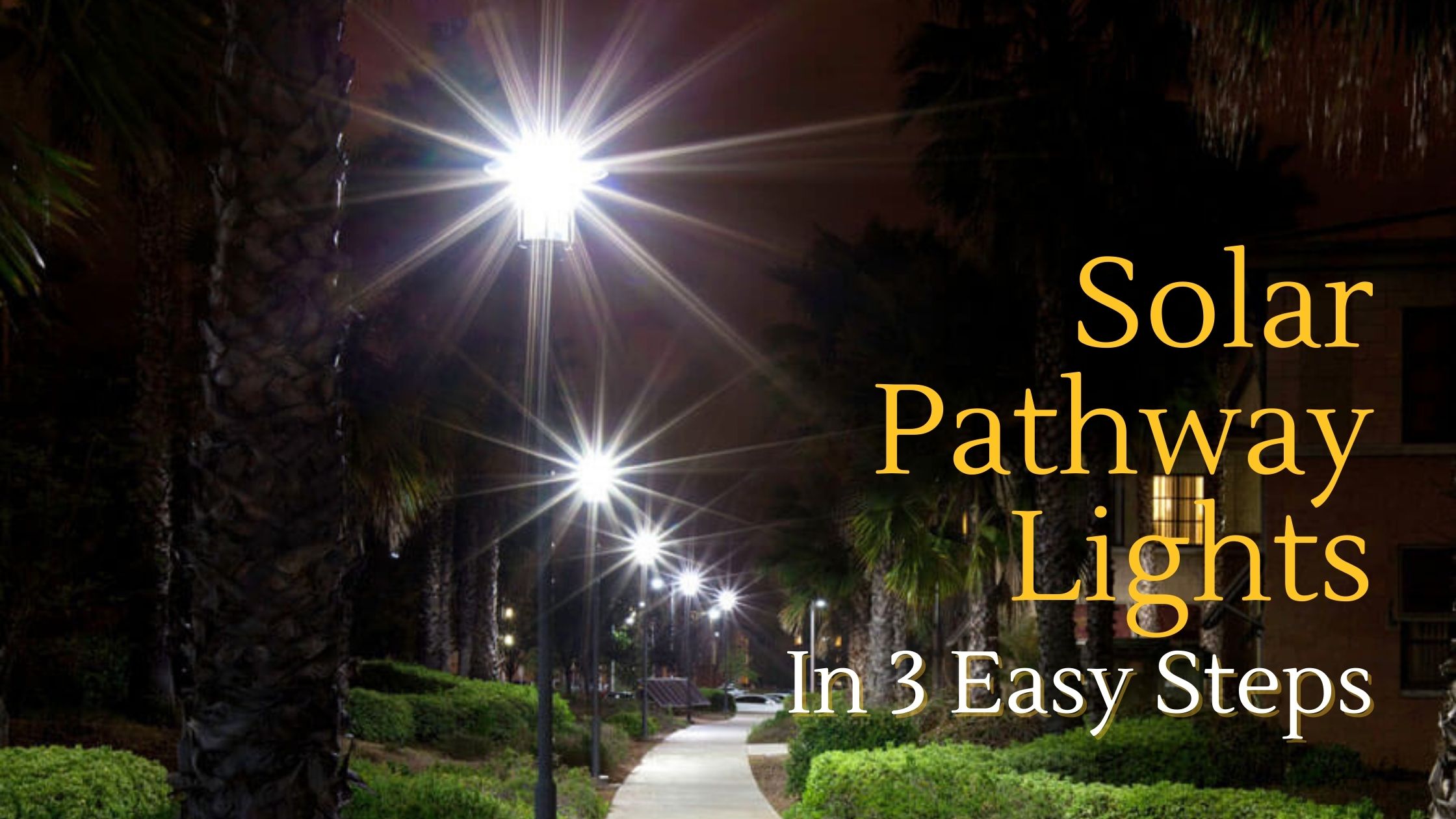


Pathway lights cover a myriad of different applications. They can encompass small walkways like in front of a house or building, landscaping areas, or extensive walkways like those around a college campus, walking trail, or park.
Adequate lighting allows people along the pathway after dark to see where they are going and provide visibility to their surrounding areas. To ensure proper illumination of these pathways, follow a few simple steps to determine what lighting works best for the project. This can include both traditional electric or solar pathway lighting projects.
Small pathways that are only 3 feet or so wide at residential areas, buildings, or gardens do not require much lighting other than illuminating the footpath. There is typically another lighting to illuminate the surrounding area. These generally are illuminated with small pagoda or bollard style lighting that only provides the light at a very low level. Rarely are high output fixtures used for these types of installations.
Low-level lighting is typically between 3 and 10 Watts and is rarely over 36" above grade. These fixtures are low voltage and require very little power output. Finally, the lights aren't necessarily running all night, typically turning off 4-6 hours after dark.
Wider pathways that are over three to five feet wide will require high-powered bollard fixtures or overhead fixtures to provide a large area of light. With LED lighting and advanced optics, these fixtures can provide lighting to just the path or the path and surrounding areas for added security.
These areas also characteristically require even illumination, which small, low-powered fixtures cannot provide. These higher-powered fixtures offer a higher intensity illumination and require higher power draw requirements. These lights may also be required to operate all night in some cases, but not all. Some lights may even reduce or turn off in the middle of the night with only a night and early morning operation requirement.
There are two ways to power pathway light fixtures: using traditional grid power or providing a stand-alone solar power system. Both setups are traditionally low-voltage; however, some higher wattage fixtures can be high-voltage.
Standard electrical power requires underground wiring and should start in the planning phase of a project. Implementing the setup during the planning phase ensures the installers do not disturb the landscaping or requiring breaking up concrete to trench under after the pathways are set. The electrical lights can be placed on a timer to only be on when they are needed, or the lights can operate all night.
Solar-powered pathway lighting, including large overhead fixtures and lower-level lights like bollards or pagoda lights, can be designed in three ways.
The first way is to have every light have its solar power source fixed to the top of the fixture. These fixtures provide the lighting where needed; however, they are prone to vandalism, shading issues, and lower solar insolation.
Due to the flat panel design, they do not get the full advantage of the sun, especially when there is inclement weather such as snow or cloudy weather. These fixtures can only be located in sunny areas and not under trees or nearby some obstacle that can cast a shadow on the solar during the day. They also do not typically operate all night or have much backup power if they cannot be fully charged by the sun the following day.
Using a single solar power source remotely installed with full access to the sun provides a better way to do low-level pathway lighting. The single power system delivers power to multiple fixtures along a path. This installation setup allows the fixtures to have more versatility to their installation location while ensuring the sun has complete access to the sun. Implementing vandal resistance is easy by installing the solar power system high up on a pole.
The solar can also install at the top of each light pole to provide power to a single fixture along a pathway. Higher output fixtures feature this type of setup and typically have one fixture per 100' space along a path.
The solar power assemblies mount at an angle facing south to take full advantage of all the power the sun can provide. The angled solar power assembly offers more energy than integrated fixtures with solar and much more backup power for inclement weather.
Solar-powered pathway lights are the perfect solution for lighting an area that does not have electrical power nearby or as an afterthought to an existing site. They can also be set on a timer for specific operation times or operate all night for areas, such as hospitals or buildings, that are open all night.
Is the pathway located in an industrial or historic area? Are there fixtures to match located nearby? With the number of light fixture styles available, there is sure to be a fixture to meet the architectural needs of the project.
LEDs have advanced and can provide similar lighting levels for each fixture style. Learn about the fixture designs and talk to your local lighting company to determine if they can meet your requirements. In addition, since LEDs easily integrate with solar power systems, the need for a solar option no longer keeps you confined to only a small selection of fixtures. Share with your designer what is needed to match or the architectural style the project needs to have.
Whether your project is AC or DC powered, there are many options to get your next pathway area illuminated. Following these three steps will help you determine what the best solution to your project is. First, please speak with your lighting representative to see what solutions they can provide you for your project and all the available options to meet your needs. With the advancements in the lighting industry happening every day, now is a great time to explore your options in solar lighting.
